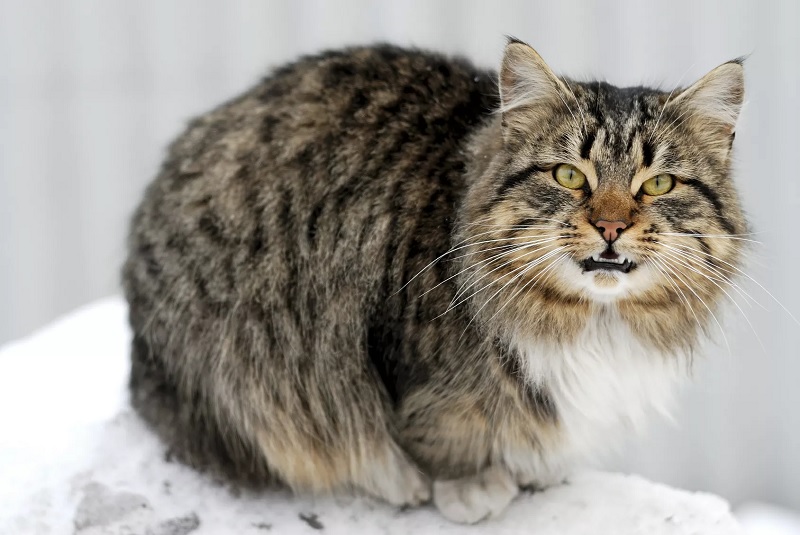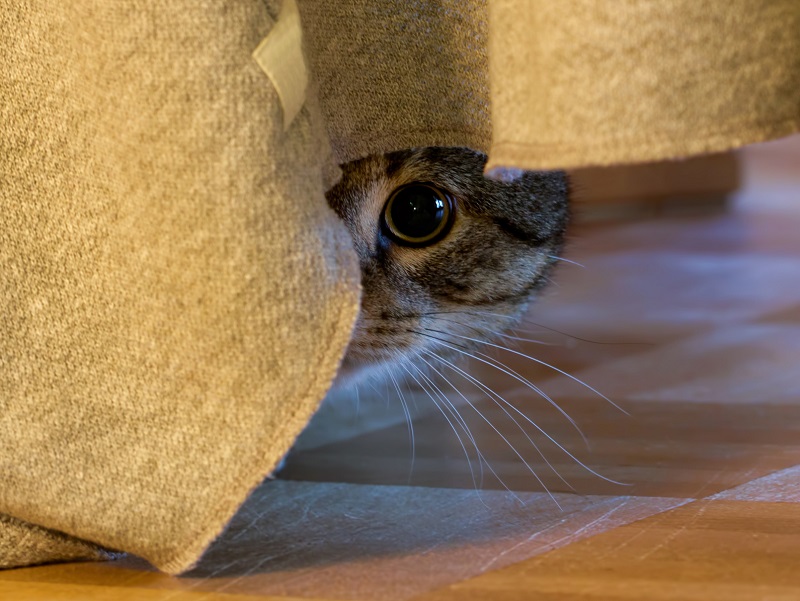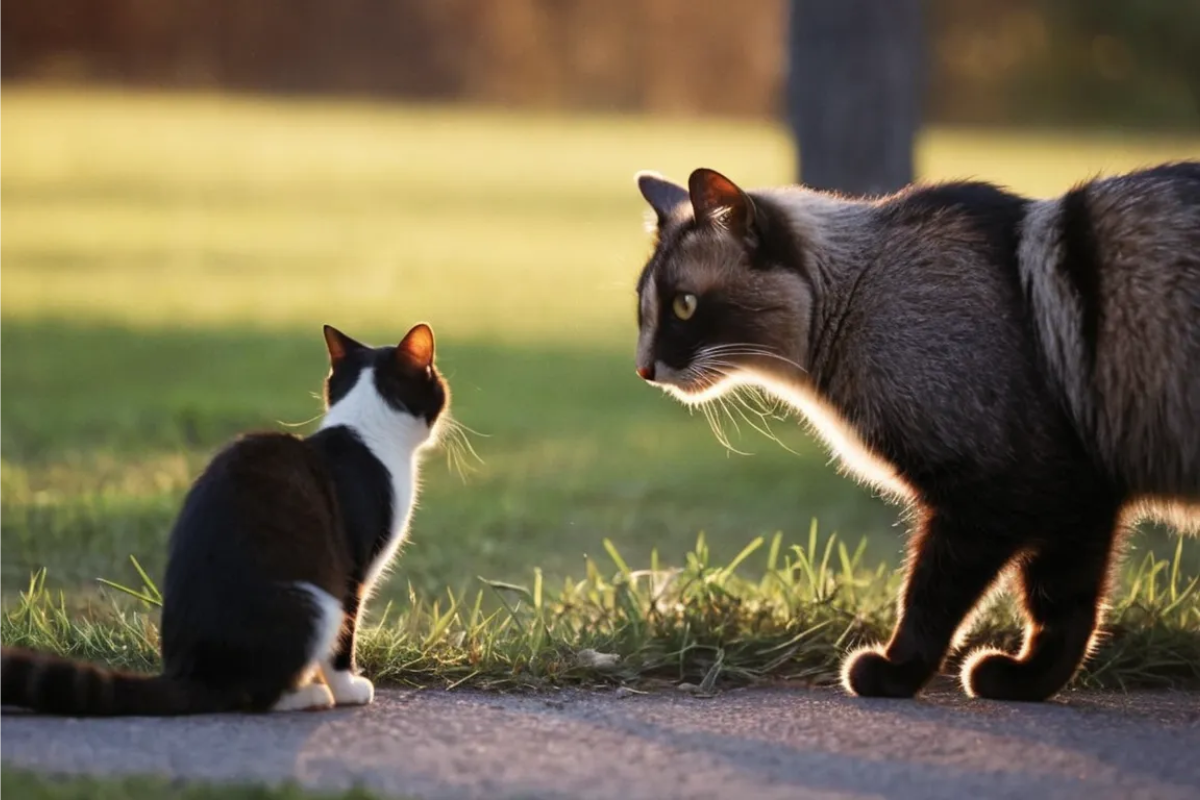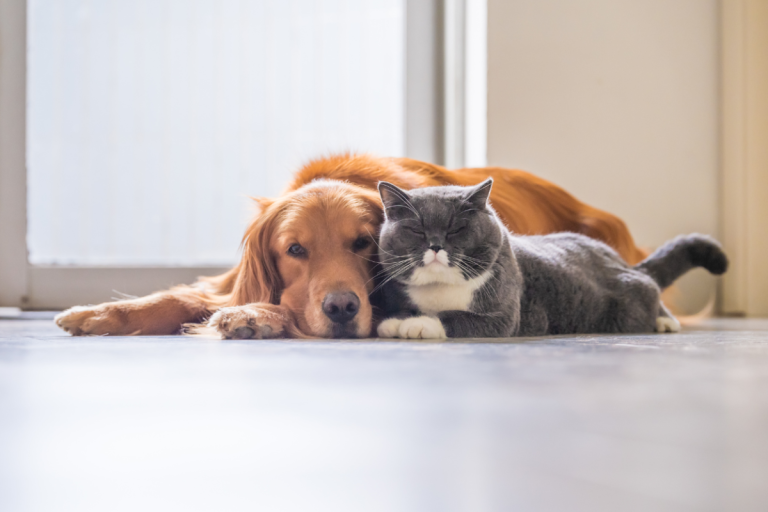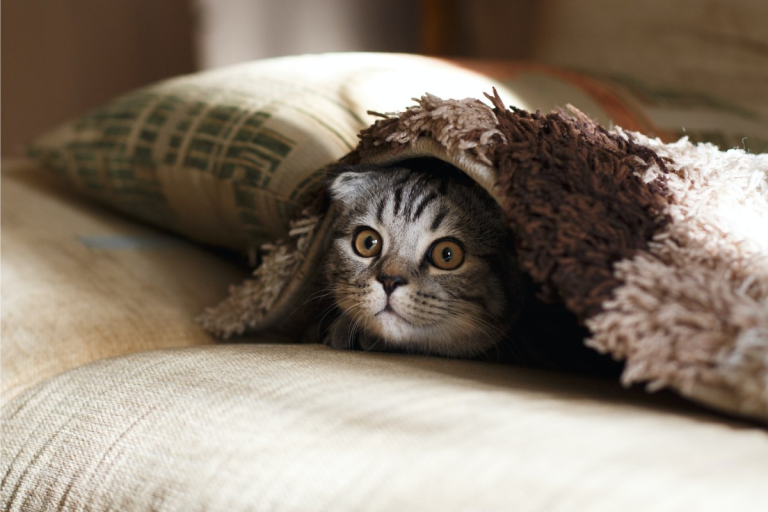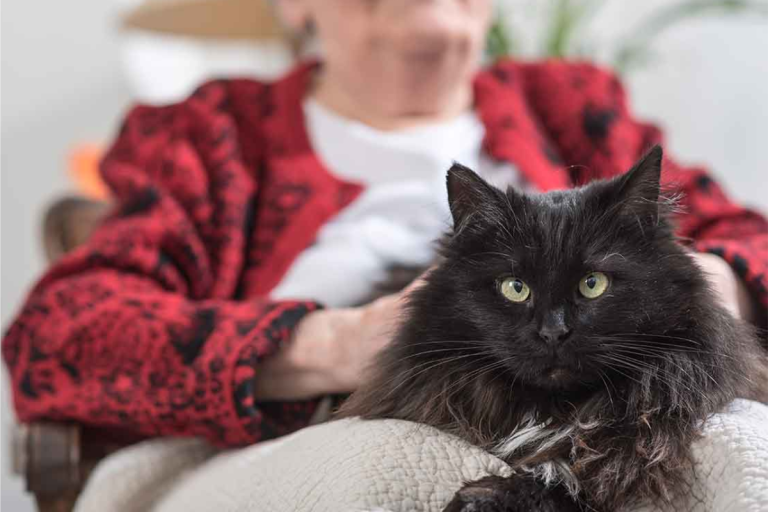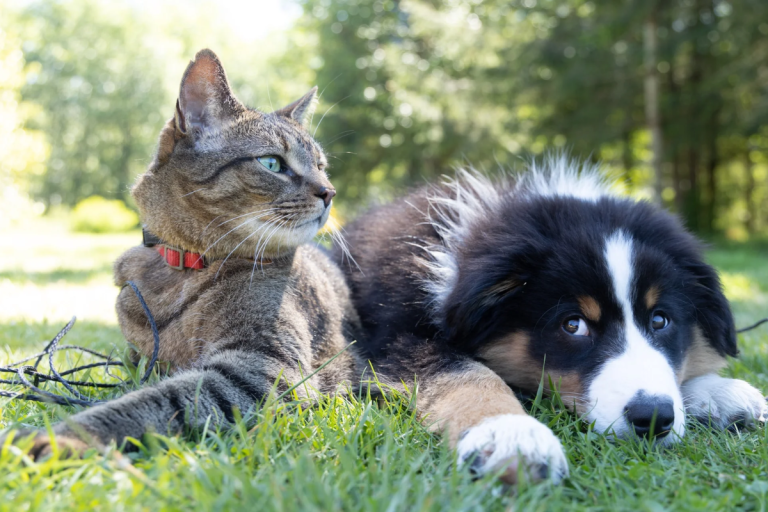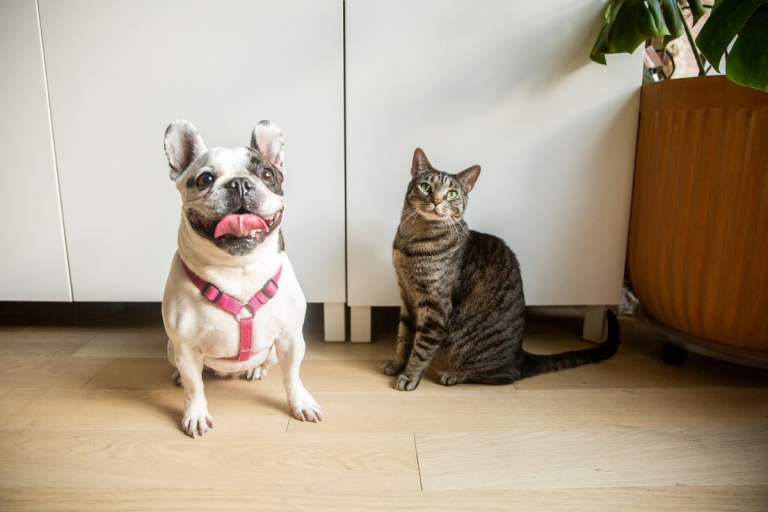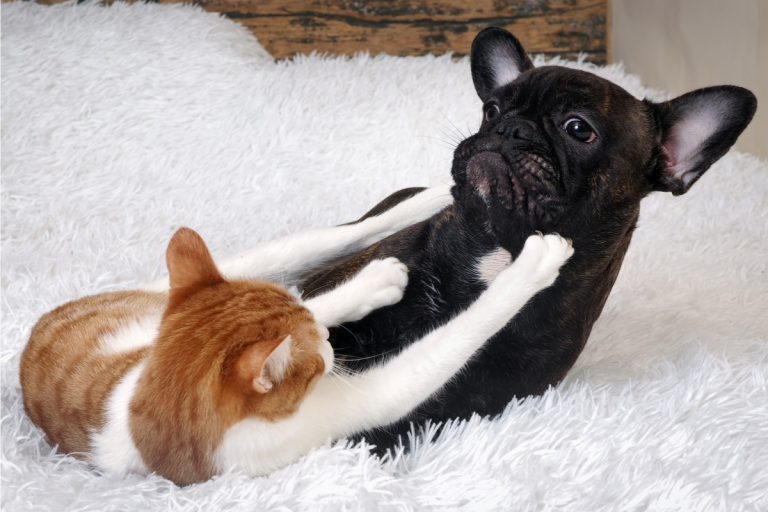Cats can sometimes feel like a puzzle you’re constantly trying to figure out. Are they ignoring you because they’re scared or because they simply don’t want to interact? If you’ve been struggling to understand your cat’s behavior, you’re not alone.
One of the biggest challenges for cat owners is distinguishing between a scared cat and an unfriendly one. The two might seem similar, but they are quite different in their motivations and responses.
In this article, we’ll break down the key signs of fear versus unfriendliness in cats, so you can better interpret your feline friend’s behavior and improve your bond with them.
What Causes Fear in Cats?
Cats, like people, can experience fear for many reasons. Understanding the root cause of your cat’s fear can help you address it more effectively. Fearful behavior isn’t always a sign of trauma; it can also stem from new or overwhelming experiences.
Environmental Triggers That Scare Cats
A sudden change in the environment can be a significant cause of fear in cats. Moving to a new home, rearranging furniture, or introducing new pets can all lead to stress. Cats are creatures of habit, and anything that disrupts their routine can make them feel insecure. Loud noises, strangers, or unfamiliar scents can also trigger fear, especially in a shy or introverted cat.
Even small changes, like a new food dish or a visit to the vet, can unsettle a cat, causing them to retreat or hide. These environmental factors may not seem like a big deal to us, but to a cat, they can feel like a significant threat.
Past Experiences Leading to Fearful Behavior
Cats who have experienced negative or traumatic events in the past may be more prone to fear. If a cat has been abused or neglected, they may develop a deep-seated fear of humans or certain situations. Even a single traumatic experience, like being chased by a dog or trapped in a small space, can leave a lasting impact on a cat’s behavior.
Cats that were not socialized properly as kittens might also exhibit fear-based behaviors when they’re older. These cats might be scared of people, other animals, or even simple household noises.
Signs Your Cat Is Scared
So, how can you tell if your cat is scared rather than just aloof? Cats communicate through body language, and a scared cat will display a variety of physical and behavioral signs that are easy to spot if you know what to look for.
Physical Indicators of Fear in Cats
One of the first signs of fear in a cat is their body posture. A scared cat will often crouch low to the ground, with their ears flattened against their head and their tail tucked tightly under their body. Their pupils may become dilated, making their eyes appear larger. You might also notice that they’re trembling or shaking.
A scared cat may also puff up its fur (piloerection) to make itself look bigger and more threatening to potential dangers. This response is often accompanied by hissing or growling, even if there’s no immediate threat.
Behavioral Clues of a Fearful Cat
Behaviorally, a scared cat will try to avoid whatever is frightening them. They might hide in small, dark spaces, like under furniture or in closets. A scared cat will often avoid eye contact, refuse to eat, or stop using the litter box if they’re too afraid to venture out.
Another common sign of fear is freezing. A cat might become completely still, hoping the perceived threat passes. In other situations, they might dart away suddenly or even lash out defensively if they feel cornered or overwhelmed.
What Makes a Cat Seem Unfriendly?
Not all cats who seem unfriendly are scared. Sometimes, what we interpret as unfriendliness is just a cat’s way of asserting their independence or protecting their personal space. It’s essential to distinguish between genuine fear and a cat who simply prefers to be left alone.
Cats’ Natural Aloofness
Cats are often considered independent creatures who don’t need as much attention as dogs. While this isn’t true for all cats, many felines are naturally more aloof. They enjoy their solitude and may not be as enthusiastic about cuddling or playing as other pets. An aloof cat may not be scared—they just prefer to interact on their own terms.
Unfriendliness can also come across as indifference. Your cat might not greet you when you come home, but this doesn’t necessarily mean they’re afraid of you. It might just mean that they’re not in the mood for interaction.
Territorial Behavior or Personal Space Preferences
Another reason your cat might seem unfriendly is that they’re territorial. Cats can be fiercely protective of their space, and if they feel you’re intruding, they might show signs of hostility, such as hissing or swatting. This behavior doesn’t always stem from fear—it can be a sign that your cat values their personal space and isn’t interested in sharing it at the moment.
Key Differences Between a Scared and an Unfriendly Cat
While the behaviors of a scared and unfriendly cat may seem similar at first, there are subtle differences that can help you tell them apart.
Body Language Comparison
A scared cat’s body language will typically be more defensive, with flattened ears, wide eyes, and a crouched posture. They might be shaking, hissing, or trying to make themselves look bigger by puffing up their fur.
On the other hand, an unfriendly cat will usually appear more relaxed but disinterested. They may avoid eye contact or turn their back on you, but they won’t display the tense, defensive postures that are typical of fear. An unfriendly cat is more likely to walk away or give you a quick swat if you push too hard, while a scared cat may freeze or hide.
Reaction to New People or Environments
Another key difference is how a cat reacts to new people or environments. A scared cat will usually become more anxious in unfamiliar situations, hiding or displaying defensive behaviors. In contrast, an unfriendly cat might be indifferent or simply avoid new people, without the added signs of stress that a scared cat would show.
If your cat becomes more withdrawn in new environments or around unfamiliar people, fear is more likely the cause than unfriendliness. However, if your cat is aloof but doesn’t seem stressed or defensive, they may just have a more independent personality.
How to Help a Scared Cat Feel Safe
If your cat is acting out of fear rather than unfriendliness, there are steps you can take to help them feel more secure. Addressing their fear will not only improve their quality of life but also strengthen your bond with them.
Creating a Secure Environment
The first step is to create an environment where your cat feels safe. This means providing them with plenty of hiding spots and safe spaces, such as a cozy bed or a perch in a quiet room. Ensure that your cat has access to everything they need—food, water, litter box—without feeling threatened or overwhelmed.
Gradually Building Trust with Your Cat
Building trust with a scared cat takes time. Don’t rush the process or force interactions. Instead, offer gentle, positive experiences that help your cat associate you with safety and comfort. You might start by sitting quietly near your cat and letting them come to you when they’re ready.
Over time, you can gradually increase your interaction, using treats, toys, and soft-spoken praise to encourage positive behavior.
Conclusion
Cats have complex personalities, and it can be challenging to tell whether your cat is scared or simply unfriendly. However, understanding the key differences in body language and behavior can help you provide the best care for your feline companion.
By recognizing the signs of fear and taking steps to address your cat’s anxieties, you can create a more harmonious and trusting relationship. Remember, patience and understanding are key when it comes to helping a scared cat feel safe and loved.
